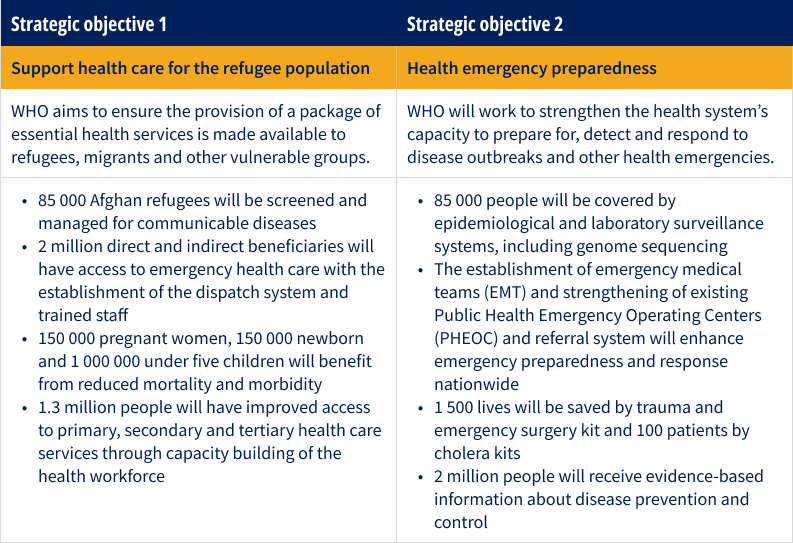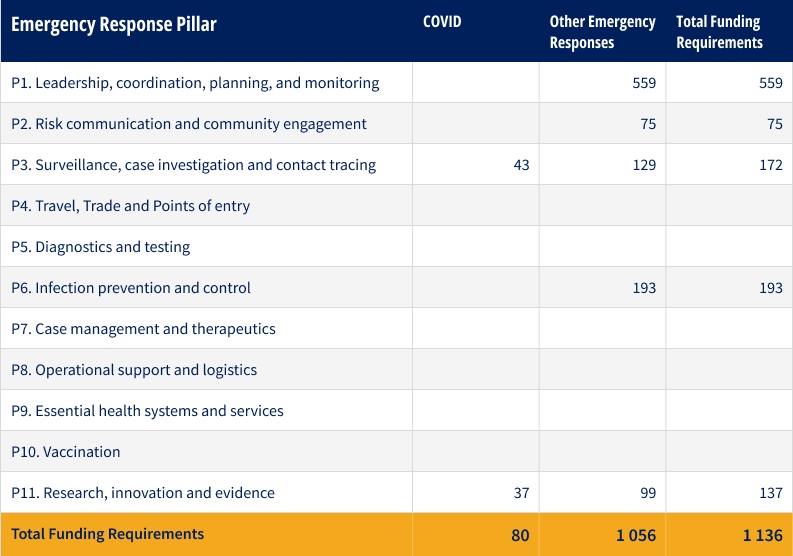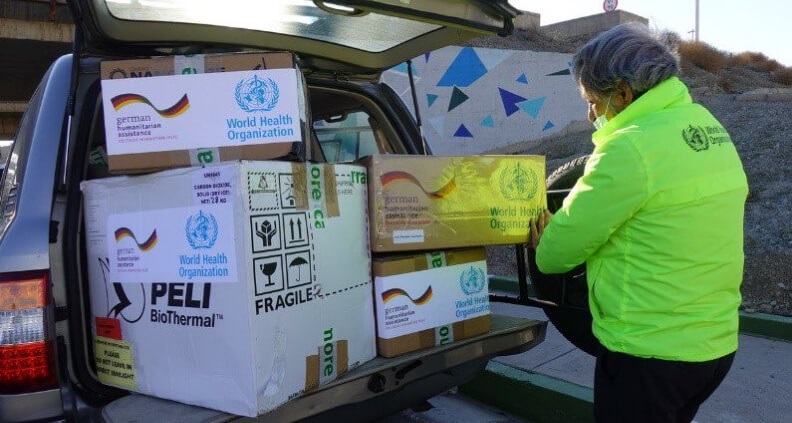
Iran (Islamic Republic of)
Iran (Islamic Republic of)
- People targeted: 1.9 million1
- People in need of health assistance: 3.7 million (excluding undocumented Afghan refugees)
- Requirements (US$): 1.1 million
Context
Iran is prone to natural disasters and has over the years seen influxes of refugees due to its geographical location at the border of Afghanistan and Iraq. Over eight million Afghan refugees currently reside in the country, with the most recent wave dating from 2021, stretching the capabilities of Iran’s otherwise well-developed health systems.
Given this continuous migration, Iran is at risk of cross-border transmission of cholera, dengue, malaria, measles, rubella, polio and tuberculosis. Iran’s readiness to rapidly respond to outbreaks, including through disease detection, diagnosis and treatment among incoming refugees, is critical. With health care utilization by Afghan refugees costing the Iranian government $32 million per year, the Ministry of Health has asked for support to ensure it can continue to extend essential health services to refugees. In addition, the COVID-19 pandemic revealed health inequities and exposed vulnerabilities in emergency preparedness and response, which have become even more pronounced with the application of international sanctions. This has disrupted the procurement and delivery of medical and laboratory equipment and supplies as well as life-saving medicines because of restricted financial transactions and the unwillingness of suppliers to sell or deliver goods to Iranian entities even for humanitarian purposes.
Emergency response
WHO will work to support the scale-up of equitable and timely access to essential and lifesaving health services, equipment, vaccines and therapeutic interventions, particularly for vulnerable populations such as refugees, migrants, women and children.
For refugees, WHO will enhance access to emergency services by establishing a more systematic dispatch system while extending health services to the most vulnerable (e.g., maternal and child health needs, provision of medical equipment and supplies and essential medicines).
To ensure Iran is better prepared to detect and respond to outbreaks, WHO will also support in the areas of surveillance, laboratory facilities, risk communication, preparedness and response. Considering that international sanctions inevitably cause delays in emergency response, preparedness is key to ensuring response capability. WHO will therefore support access and procurement of critical equipment and supplies. In addition, because Iran is prone to high threat pathogens (i.e., cholera and Crimean-Congo hemorrhagic fever) and re-emerging infectious diseases (i.e., measles and polio), WHO will strengthen surveillance and laboratory capabilities at the sub-national and district levels.
Risk communication is also expected to be part of the continuum of emergency preparedness and response to ensure correct information is available to influence positive behavior.
Strategic objectives


Key activities
- Providing essential health services to refugees and migrants
- Improving access to inclusive health services for maternal and neonatal care and endemic communicable diseases (e.g., HIV, TB, hepatitis and vector-borne diseases)
- Enhancing access to health care among refugees, migrants and host community through an improved emergency dispatch system
- Strengthening surveillance and laboratory capacity, including for emerging and re-emerging diseases (e.g., mpox)
- Conducting operational research in surveillance and laboratory to inform evidence-based interventions
- Procuring life-saving medical and laboratory equipment to enable timely response to sudden public health emergencies
- Improving infection prevention and control in health facilities
- Integrating risk communication in a variety of preparedness and response activities in the post-COVID-19 era
- Establishing linkage between public health emergency operation center and other essential Response pillars, including emergency medical team (EMT)
Funding requirements
Overall country funding requirements, including COVID-19, by pillar (US$’000)


Success stories
Response to the COVID-19 emergency
With the support of a donation of six next-generation genomic sequencing machines from WHO, the COVID-19 Incident Management Team of the WHO Country Office in the Islamic Republic of Iran has achieved significant milestones at three major reference centers.
The sequencing machines have enabled the republic to scale up its sequencing capacity from only 86 samples of COVID-19 in December 2021 to 5 769 samples in April 2022, allowing the detection of all variants as they continued to emerge.
While these sequencing machines will continue to be used to scale up response to COVID-19, looking beyond the pandemic, they will also be used to sequence other respiratory viruses, such as influenza and measles. These are diseases which carry a significant public health burden in the country, as well as across the eastern Mediterranean region. According to the WHO Country Office, together with the Ministry of Health and Medical Education and reference laboratories, this expansion is an important strategic goal to support the country proactively prepare for, and respond to, future health emergencies.
For more information
Dr Syed Jaffar Hussain | Country Representative and Head of Mission | WHO Office, Islamic Republic of Iran | hussains@who.int
Dr Mikiko Senga | Deputy Representative | WHO Office, Islamic Republic of Iran | sengam@who.int

Delivering next-generation sequencing equipment to the National Influenza Center.

